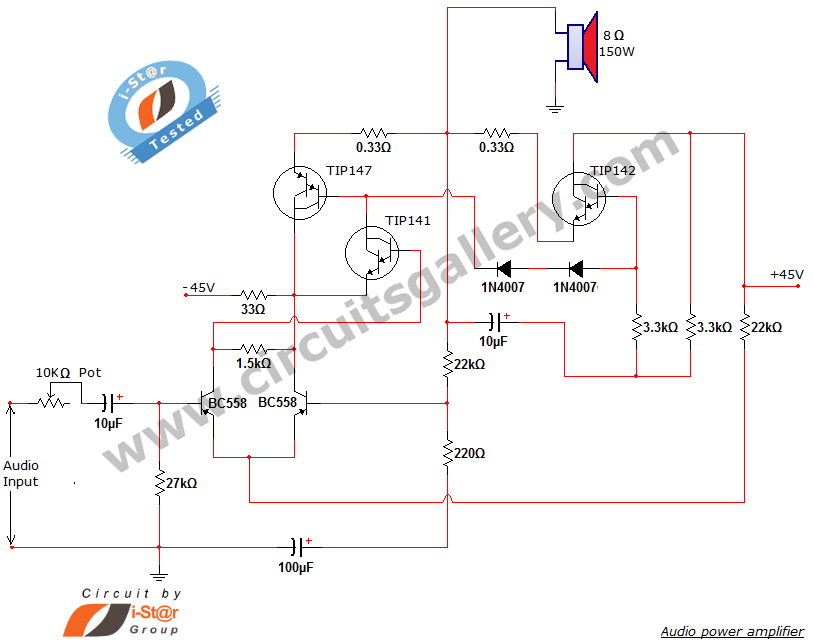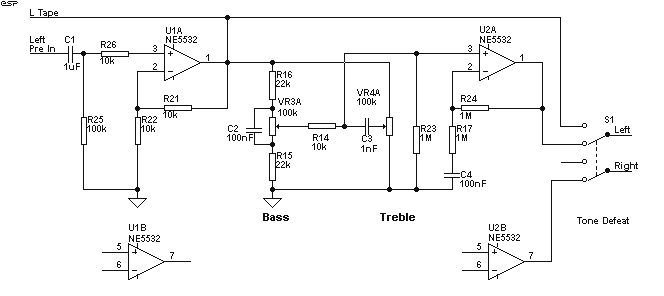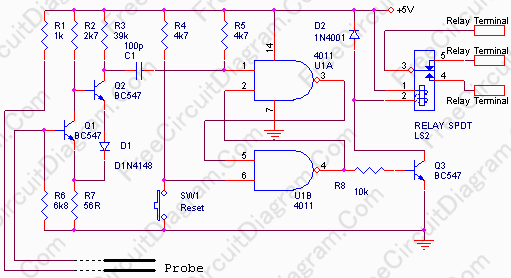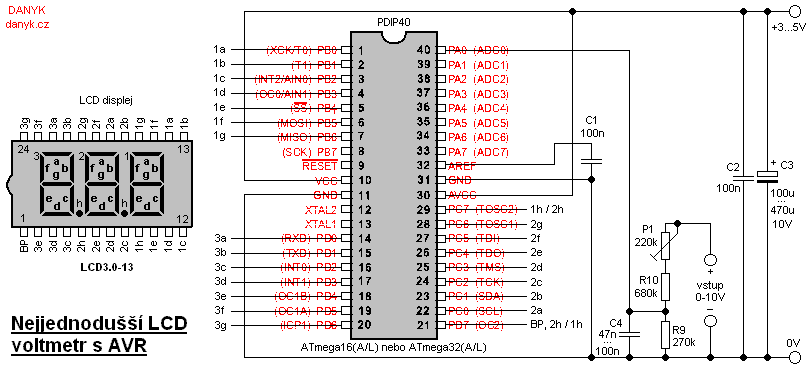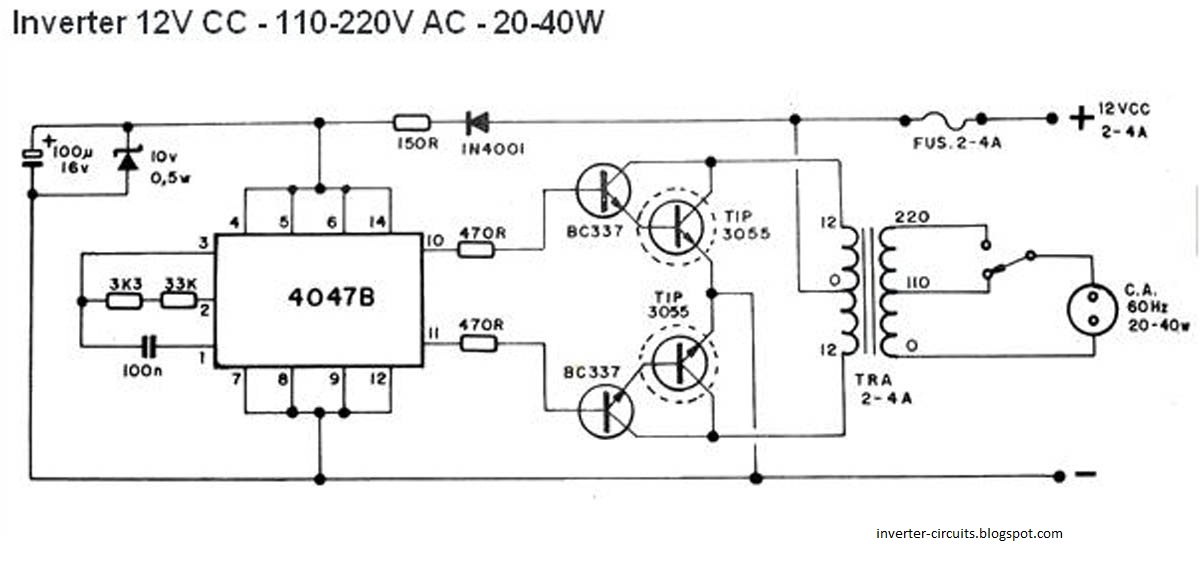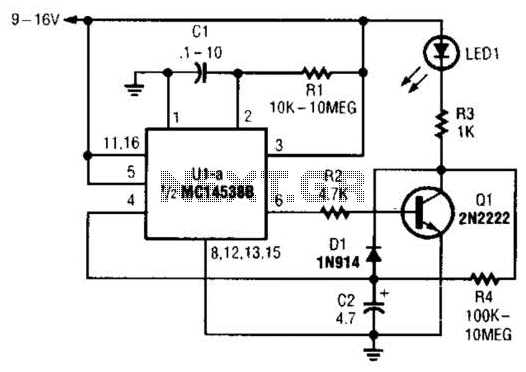
Simple Staircase Generator
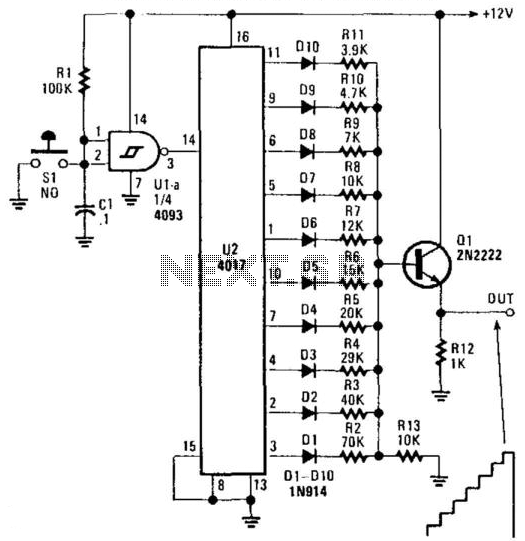
U2 is a decade counter/divider, U1 is used as a switch debouncer. For a self-generating system, connect a resistor between pins 2 and 3 of U1, value that should be between 10 KOhm and several, depending on desired frequency. C1 can also be varied to change frequency. Also, S1 can be omitted in the self-generating version.
The circuit described involves two primary components: U1, which functions as a switch debouncer, and U2, a decade counter/divider. The switch debouncer (U1) is essential for eliminating noise from mechanical switches, ensuring that when a switch is pressed, only a single transition is registered, rather than multiple erroneous transitions that could occur due to contact bounce.
In the self-generating configuration of this circuit, a resistor is connected between pins 2 and 3 of U1. The value of this resistor should typically be in the range of 10 KOhm, but it can be adjusted to higher values depending on the desired frequency output of the system. This resistor, in conjunction with the capacitor C1, forms an RC timing circuit that determines the frequency of oscillation. By varying the capacitance of C1, the frequency can be fine-tuned to meet specific application requirements.
Additionally, S1, which may serve as an external switch input in non-self-generating configurations, can be omitted in the self-generating version. This allows the circuit to operate independently without external input, making it suitable for applications where a continuous output signal is required. The output from U2, as a decade counter, can provide a sequence of digital signals that can be used for various applications, such as driving LEDs, frequency division, or other digital logic circuits.
Overall, this circuit configuration is useful for creating reliable timing and counting applications in digital electronics, with flexibility in frequency adjustment through passive component selection. U2 is a decade counter /divider, Ul is used as a switch debouncer. For a self-generating system, connect a resisor
The circuit described involves two primary components: U1, which functions as a switch debouncer, and U2, a decade counter/divider. The switch debouncer (U1) is essential for eliminating noise from mechanical switches, ensuring that when a switch is pressed, only a single transition is registered, rather than multiple erroneous transitions that could occur due to contact bounce.
In the self-generating configuration of this circuit, a resistor is connected between pins 2 and 3 of U1. The value of this resistor should typically be in the range of 10 KOhm, but it can be adjusted to higher values depending on the desired frequency output of the system. This resistor, in conjunction with the capacitor C1, forms an RC timing circuit that determines the frequency of oscillation. By varying the capacitance of C1, the frequency can be fine-tuned to meet specific application requirements.
Additionally, S1, which may serve as an external switch input in non-self-generating configurations, can be omitted in the self-generating version. This allows the circuit to operate independently without external input, making it suitable for applications where a continuous output signal is required. The output from U2, as a decade counter, can provide a sequence of digital signals that can be used for various applications, such as driving LEDs, frequency division, or other digital logic circuits.
Overall, this circuit configuration is useful for creating reliable timing and counting applications in digital electronics, with flexibility in frequency adjustment through passive component selection. U2 is a decade counter /divider, Ul is used as a switch debouncer. For a self-generating system, connect a resisor
between pins 2 and 3 of a Ul value that should be between 10 KOhm and several , depending on desired frequency, Cl can also be varied to change frequency. Also, SI can be omitted in the self-generating version.
🔗 External reference